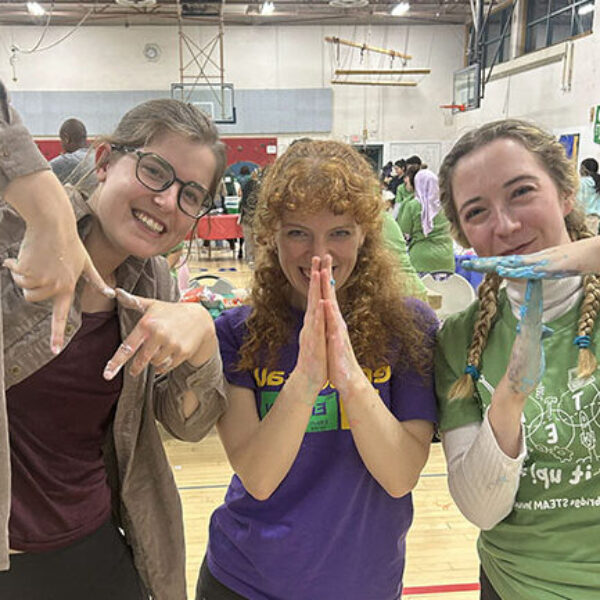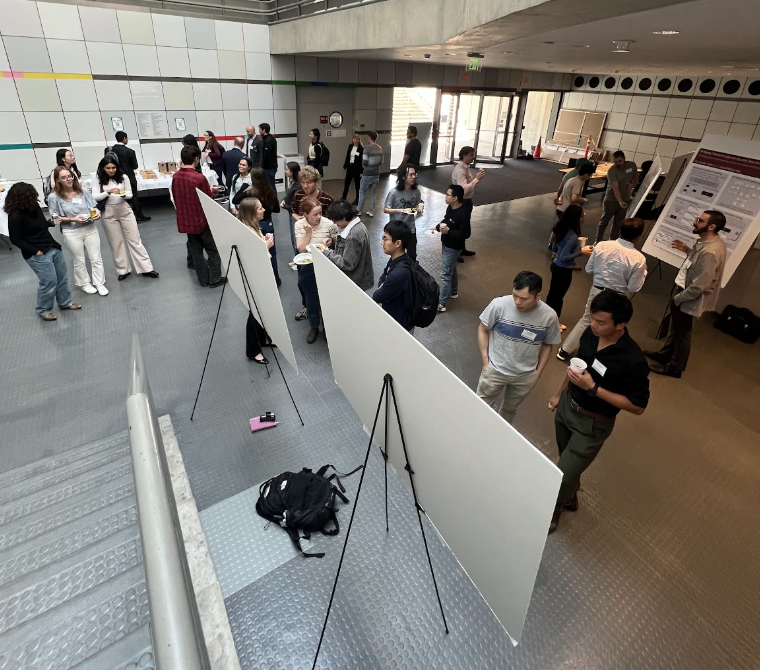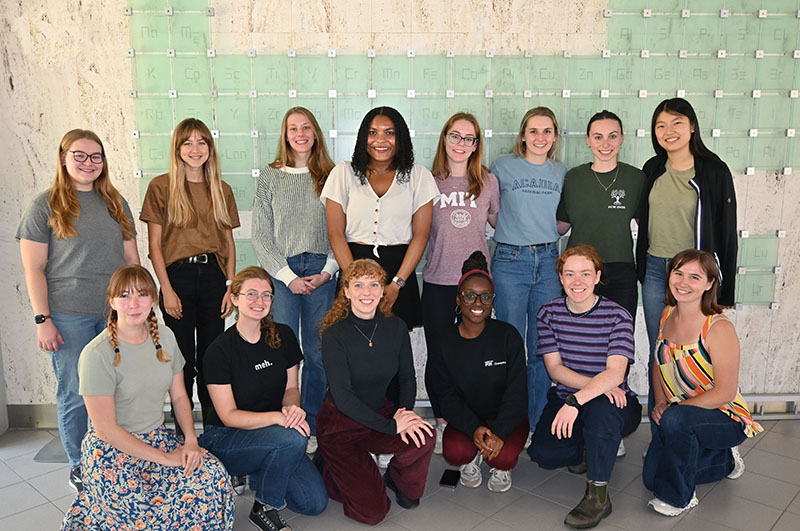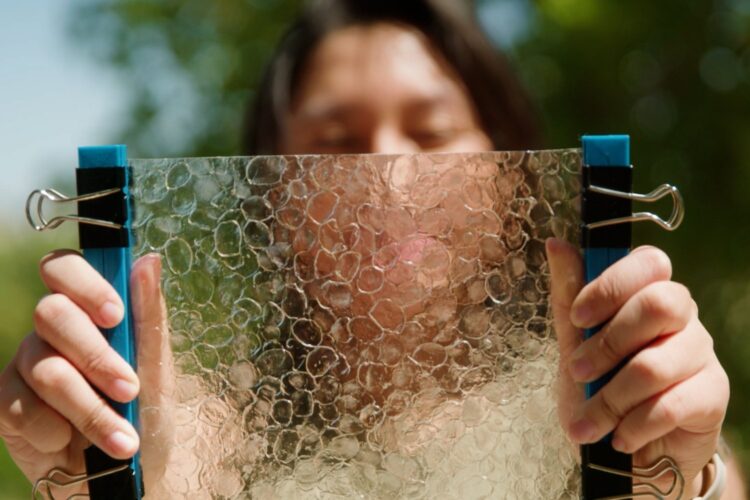Creating Stronger Bonds: MIT’s Women+ in Chemistry club builds community through science

They study peptides and polymers, research cancer therapeutics, mentor new graduate students, and host professional conferences. They also organize community-building events, lead lab tours for high school students, teach Independent Activities Period (IAP) classes, and even show Boston elementary schoolers how to make slime. With more than 70 graduate and postgraduate members, the Women+ in Chemistry (WIC+) club is a powerhouse of collaboration and connection—advancing science while fostering a welcoming and supportive community for women in chemistry at MIT and beyond.
Since 1995, the department has seen a 45 percent increase in female graduate students. According to Co-president Ekua Beneman, WIC+ has evolved from attracting more female scientists to creating “a welcoming community and space. We’re always looking for new projects and ways to collaborate with each other and other graduate students at MIT.”
Mentorship & Outreach

WIC+ offers a mentorship program for first-year graduate students. Mentors provide not only academic advice, such as course selection, but also help the first-years with choosing a research group, ideas to help with work/life balance, and finding fun places to explore in Boston and Cambridge.
“Part of our mission is to hold events that are open to the entire MIT community. Every few months, we host a social event. These events range from flower bouquet making to apple picking. Our outreach initiatives are a way to get kids interested in science and chemistry without them really knowing it. For instance, last year, we made Halloween-themed slime. It’s exciting for them, and we enjoy going into local schools,” says Jennifer Pierre-Louis, co-president.
Beneman adds, “We also work with ChemREFS to help them prepare for their second-year exams. We’re hoping to work more with the undergraduate chemistry club (ClubChem) as well.”
Professional Development

WIC+ helped to organize The MIT-Merck Symposium held on September 11. This event welcomed more than 100 scientists from MIT and Merck to share their research and discuss their experiences. The day kicked off with rapid-fire talks by students, followed by a career panel featuring Merck scientists at various stages in their Merck careers, and closed with a poster session.
Additionally, WIC+ teams up with members from Chemistry Alliance for Diversity and Inclusion (CADI) to host their annual WIC+/CADI Symposium, which will be held on January 15, 2026. It’s a space for second-and third-year students to practice presenting their work to their peers with some faculty present. Students then receive feedback before presenting at larger conferences.
The club offers numerous professional development opportunities for MIT students and members of the broader community. Last spring, WIC+ collaborated with the Northeastern Section of the American Chemical Society, Harvard Women + in Chemistry, Empowering Women in Organic Chemistry, the Women Chemists Committee, and the Younger Chemist Committee to host an event that brought together chemists from across New England to share their research, network, and build community. Held March 6, 2025, the program featured a career panel, poster session, and networking activities, drawing more than 200 attendees and 76 poster presenters.
Next year’s Celebrating Women in Chemistry event is scheduled for March 5, 2026, and will offer the opportunity for participants to connect, present their work, and engage with the chemistry community.
“I love the enthusiasm of WIC+ and deeply appreciate their continuous efforts to mentor and support all chemistry students,” says MIT Professor Catherine Drennan, faculty advisor to the club.
In addition to hosting and organizing symposiums, WIC+ offers a travel grant that enables members of the chemistry community to attend professional development events. This program is supported by donors to the Department of Chemistry who share its mission and provide funding to WIC+. The travel grant is administered by the club’s Treasurer, Catherine Hazard, who assembles a review committee to ensure each applicant receives fair consideration for funding.
“One recipient told me how meaningful the travel grant was in advancing her professional goals. As we continue to build our path forward, we hope to foster ongoing collaborations with MIT graduate students and postdocs. Maintaining these relationships is another important benefit of these programs,” says Hazard.
“The Student Organizations and Leadership and Engagement office is thrilled to see the Women in Chemistry club continue to grow and prosper,” says Erin Farrell, senior associate dean for Student Engagement & Campus Activities in the Division of Student Life.
Research Areas

When not working on club-related events, the executive board members are busy working towards doctoral degrees. The breadth of chemistry is illuminated through this sample of research topics conducted by the executive board officers.
- Beneman’s research focuses on designing and synthesizing glycopolymers that mimic fungal cell wall sugars to better understand how the immune system detects pathogens. By studying how these polymers engage receptors like Dectin-1 on macrophages, her work aims to uncover strategies to boost antifungal immunity and inspire new therapeutic approaches.
- Pierre-Louis is developing low-cost, ultra-sensitive chemiluminescent lateral flow assays for detecting interleukin-6, enabling earlier identification of cytokine release syndrome and timely therapeutic intervention. Her goal is to create portable diagnostic tools that broaden access to real-time clinical monitoring outside of hospital settings.
- Focusing on cell-penetrating peptides, Hazard’s research seeks the delivery of otherwise membrane impermeable cargo with the overall goal of increasing intracellular delivery efficiency. In particular, she is interested in how different physicochemical properties (such as length, charge, hydrophobicity) influence peptide-mediated delivery of antisense oligonucleotides and cancer therapeutics.
- Kara Moulton, the club’s secretary, researches the use of photochemistry and site-selective radical generation for the synthesis of rare carbohydrate isomers. These sugars are often pharmaceutically relevant targets and challenging to access via other synthetic methods.
- Elizabeth Lacroix, Outreach and Mentorship chair, is working on tailoring bottlebrush polymer architecture for drug and imaging agent delivery applications in women’s health. She is focused on developing an imaging delivery agent for adenomyosis and endometriosis, diseases that occur in 10 percent of women and girls, with a diagnosis rate of 7-10 years after symptom onset.
- Event Coordinator, Alisia Pan, focuses on applying technologies in spatial omics and nucleic acid modifications to study mRNA lifecycle and immune system interactions. As a physician-scientist in training, she aims to apply her research to novel biomarker discovery and therapeutic development.
Have a question about this article?
Contact Sarah Foote from the Division of Student Life’s Communications Office at dsl-comm@mit.edu








